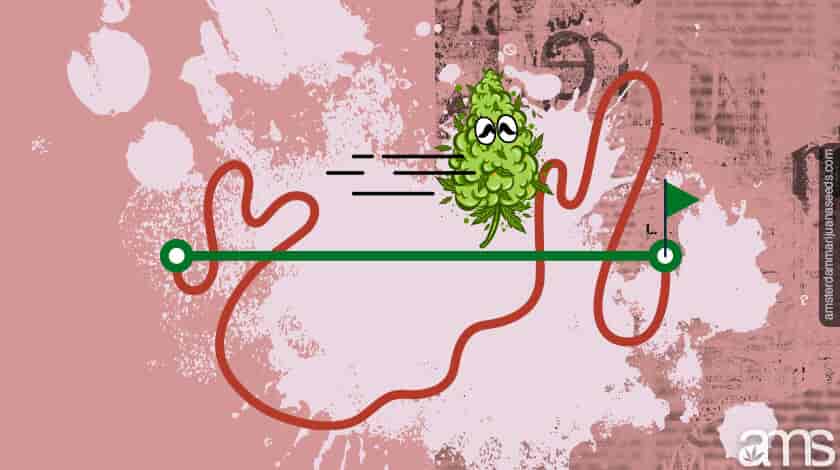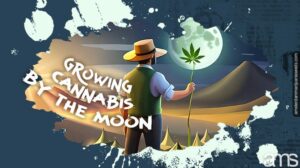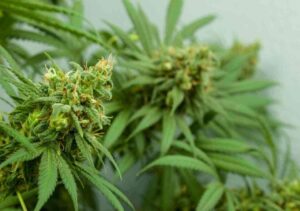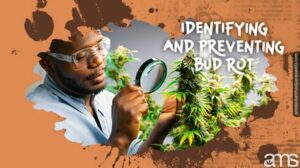Table of Contents
Remember that time you ate a hash brownie and it did nothing? At least you thought it did nothing. You and your friends waited and waited. Growing impatient, you all decided to smoke up or even worse, have another brownie. Fast forward a few hours and you were either gorging on an extra-large cheese pizza or trying to invent a new world religion.
The rest? Well, the rest is history…
I mean actual history because this is a tale as old as time. Cannabis has been eaten across ages and cultures since the Stone(d) Ages. Writing in the book ‘Pot in pans: A History of Eating Cannabis', author Robyn Griggs Lawrence claims that early humans “would have had a hard time ignoring the cannabis plant…dripping with resin…the fresh green leaves, bitter flowers, and nutty seeds…When they licked it off, they discovered the plant's ability to intoxicate.”

History of eating cannabis
So, you can imagine people from the time of the cavemen to ancient Persia and beyond, sharing experiences similar to yours. The enigmatic and renowned botanist, Richard Schultes, studied the mind and body-altering plants such as ayahuasca and ebéna, known to the Yanomami people of the Amazon as ‘the Semen of the Sun’. Me either. Schultes claimed that ingesting cannabis plants led early humans to invent religion.
If only they had extra-large cheese pizzas back then.
So why is eating cannabis so unpredictable? Why does it take so long to work? When it finally does, why does it hit so hard that you feel like inventing new faiths? Well, the answer is down to how cannabis is absorbed and broken down by our bodies. Read on to find out more about eating cannabis and how to do it safely.

Having moved on from the ways of our cave-dwelling ancestors, most people in the modern world prefer to smoke cannabis. There is no questioning how effective smoking can be but why does it work so well?
The answer lies in something called bioavailability, which is the amount of active ingredient available to the body after it has been taken. Imagine our body is an obstacle course. The finish line is the brain, packed with cannabinoid receptors. Our competitor? THC.
When we smoke cannabis, THC essentially takes a shortcut to the finish line
Our lungs are densely packed with blood vessels which are responsible for oxygen exchange. There, THC passes directly into the bloodstream, is pumped back to the heart, and then around the body. Smoking bypasses many obstacles, but wastage of weed is significant, with up to half lost to ‘side stream smoke’.
The final bioavailability of inhaled cannabis is about 35%. Sounds pretty low right? Let’s find out how eating stacks up.

Compared to the popularity of smoking cannabis, eating it is a distant second. Why? Well, it needs to be prepared in advance, takes a long time to get working, and has a less reliable effect than smoking does. Why? Well, the chemical properties of THC and other cannabinoids mean it hits all the obstacles along the way to the finish line. Let’s take a look at them.
Obstacle 1 - Decarboxylation
First off, for THC and other cannabinoids to give us the effects we want from them, they need to undergo a reaction called decarboxylation. This activates the cannabinoids but needs to be done at a high temperature such as baking, smoking, and vaping. Eating a handful of raw herbs is likely to be nothing more than a chewy, unpleasant experience. Above all, it’s a waste of good weed due to skipping the essential step of decarboxylation. So, you’re going to have to extract the THC from the plant and then heat it.
Obstacle 2 – Extraction from the plant
Ever wondered why cakes, brownies, and oils are such popular ways to eat cannabis? THC and other cannabinoids are lipophilic meaning they dissolve well in fats, which is why heating cannabis in butter or oil extracts THC as it dissolves in the fat. This is a perfect base for your baked goods.

Obstacle 3 – Absorption into the body
You probably already know that bodies are about 60% water. Bad news for THC, which dissolves well in fats but not in water. To get into the (mostly watery) bloodstream, THC has to cross the cells that make up the lining of our gut and blood vessels which, you guessed it, are also mostly made of water.
Obstacle 4 – Gut enzymes
While THC and other cannabinoids are in the gut trying to cross over, they’re exposed to a range of enzymes and metabolic processes that degrade and deactivate them.
Obstacle 5 – The liver
Ok. Cool! THC has made it into the bloodstream. Smooth sailing from here on in, right? Wrong. The blood from the intestines isn’t pumped straight to the heart like the blood from the lungs. Instead, it drains into the portal vein, which takes the blood to the liver. This gives the liver a chance to remove any harmful substances before they get to the rest of the body. After this point, only 10-20% of the initial THC dose is left.

The finish line
Phew. Once safely past the liver, THC reaches the heart and can be pumped around the body to reach the cannabinoid receptors in the brain. It hasn’t set any personal bests, taking 2-3 hours to reach maximum levels. Only 3-9% of the THC has made it this far, so why do you feel so high? Well, this is thought to be down to a bit of help from our old friend, the liver.
The liver isn’t all bad for those seeking a high. It converts THC into 11-OH-THC, which has been suggested by some researchers to be much more psychoactive. Passing through the liver generates more 11-OH-THC than when it is smoked. On top of this, 11-OH-THC is thought to pass into the brain more quickly than THC and reaches higher concentrations. Finally, while our bodies are 60% water, our brains are 60% fat, meaning THC and 11-OH-THC dissolve easily and distribute around the brain.
All of this might explain why eating cannabis really sends you into space/the stone age. Your choice.
The final word: how to eat cannabis safely
Edibles, and brownies, are notorious for their unpredictability. Now that you know all the hoops THC has to jump through to get to your brain, you can understand why. Here are the best ways to enjoy these things safely:

Start low and go slow
Edible forms of cannabis have the potential to be much stronger than you think. You can always add more, but you can never take it away once it’s in your system.
Use edibles from reputable companies with dosing information
If Cannabis and THC-containing products are legal where you live, we suggest sourcing them from a reputable, licensed company with good reviews and accurate dosing information on the package.
Be patient
Edibles normally take a bit of time to kick in. Don’t smoke more weed or eat another edible before the first one has kicked in
- SEO Powered Content & PR Distribution. Get Amplified Today.
- Platoblockchain. Web3 Metaverse Intelligence. Knowledge Amplified. Access Here.
- Source: https://amsterdammarijuanaseeds.com/blog/the-low-down-on-eating-weed-from-the-stoner-age-to-space-cakes
- 1
- 7
- a
- ability
- About
- above
- accurate
- across
- active
- advance
- After
- Ages
- All
- already
- always
- Amazon
- amount
- Ancient
- and
- Another
- answer
- around
- author
- available
- back
- Bad
- base
- because
- before
- BEST
- Beyond
- Bit
- blood
- body
- book
- Brain
- Broken
- called
- cannabis
- cartoon
- Cells
- Chance
- chemical
- choice
- claimed
- claims
- Companies
- company
- competitor
- course
- Cross
- decided
- DID
- directly
- discovered
- distribute
- Dont
- down
- Early
- easily
- eat
- edible
- effect
- Effective
- effects
- either
- enjoy
- essential
- essentially
- Ether (ETH)
- Even
- exchange
- experience
- Experiences
- Explain
- exposed
- extract
- Extracts
- FAST
- Fat
- few
- final
- Finally
- Find
- First
- fit
- forms
- Forward
- fresh
- friend
- friends
- from
- get
- Give
- gives
- Go
- going
- good
- goods
- Green
- Growing
- guessed
- Half
- handful
- Hard
- harmful
- hash
- head
- Heart
- help
- here
- High
- higher
- history
- Hit
- Hits
- HOURS
- How
- How To
- HTTPS
- Humans
- image
- in
- information
- initial
- instead
- IT
- jump
- kick
- Know
- known
- Led
- Legal
- levels
- Licensed
- likely
- Line
- live
- Liver
- Long
- long time
- Look
- Low
- made
- make
- many
- maximum
- meaning
- might
- mind
- Modern
- more
- most
- Need
- needs
- New
- news
- NIH
- normally
- notorious
- obstacle
- obstacles
- Oil
- oils
- Old
- ONE
- Other
- Oxygen
- package
- packed
- Paper
- passes
- Passing
- past
- People
- perfect
- personal
- Pizza
- plants
- plato
- Plato Data Intelligence
- PlatoData
- Point
- Popular
- popularity
- Portal
- potential
- prefer
- prepared
- pretty
- probably
- processes
- Products
- properties
- quickly
- range
- Raw
- reach
- Reaches
- Read
- reliable
- religion
- remove
- Renowned
- reputable
- research
- responsible
- REST
- Reviews
- Richard
- Rock
- safely
- sailing
- Second
- seeking
- set
- sharing
- significant
- similar
- since
- Smoke
- So
- some
- something
- Space
- Stacks
- Step
- STONE
- straight
- stream
- stronger
- studied
- such
- system
- Take
- takes
- taking
- THC
- The
- their
- things
- thought
- Through
- time
- to
- top
- under
- understand
- unpredictable
- us
- Waste
- Water
- ways
- weed
- which
- while
- Word
- Work
- working
- world
- writing
- Wrong
- Your
- zephyrnet











